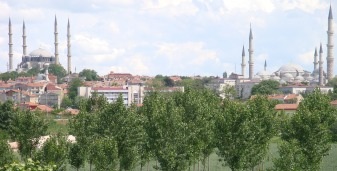Birthplace of Mehmed the Conqueror Population: 180,000
Old name: Adrianople
Market day: Friday (Ulus Pazarı)
Oil-Wrestling Festival: Early July
Favourite sons: Emperor Hadrian, İlhan Koman (sculptor)
Tucked away in the far northwest corner of Turkey, the lovely small town of Edirne tends to get overlooked by visitors intent on the typical two-week loop tour of the country.
The original town here was called Adrianople after the Emperor Hadrian who established it.
From 1365 until the conquest of Constantinople in 1453 Edirne served as the second Ottoman capital (after Bursa) and it still retains a great deal of its original Ottoman town planning. Unlike so many places in Thrace it hasn’t completely vanished behind a wall of high-rise apartment blocks. Instead, it’s a pleasingly low-rise town still ringed with water meadows, the sort of place which positively insists on that rather un-Turkish activity of taking a short country stroll.
Edirne is best known for two completely different things: the Selimiye Cami, the masterwork of the great Ottoman architect Sinan and one of Turkey’s world heritage sites; and the oil-wrestling bouts that take place in the meadows of Kırkpınar every July.
Don’t leave town without:
- sampling tava ciğer (deep fried liver), the melt-in-the-mouth local delicacy served with sliced tomatoes, onion and fiery dried peppers from many little booths in the town centre.
- doing what the locals doing and heading south of the Meriç river (or to Karaağac) for brunch. To do it in Ottoman style travel there in a phaeton hired from opposite the Ulus Pazarı.
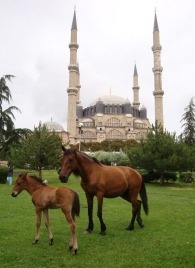 Around the Selimiye Cami
Around the Selimiye Cami
The Selimiye Cami was built between 1569 and 1575 on a piece of land that slopes gently downwards to the town centre. Sinan himself is said to have thought it his masterpiece, outstripping in beauty even the more famous Süleymaniye Cami in İstanbul.
The mosque now forms the focal point of a quarter than could hardly be more achingly historic. Immediately behind it stand the ruins of the Sultan Selim Saray Hamamı (Turkish bath) and a collection of Ottoman tombstones brought together in a small park.
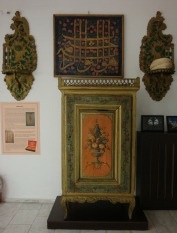 Overlooking the park is Edirne’s museum (closed Mondays) which showcases finds from the dig that took place around the Macedonian Tower; you won’t be able to miss it because the grounds also accommodate some reproductions of the round wattle-and-daub huts popular with early Thracians.
Overlooking the park is Edirne’s museum (closed Mondays) which showcases finds from the dig that took place around the Macedonian Tower; you won’t be able to miss it because the grounds also accommodate some reproductions of the round wattle-and-daub huts popular with early Thracians.
A medrese that forms part of the mosque complex houses a second small museum of Turkish and Islamic Arts ; its exhibits are interesting if unlabelled.
To complete the square, the remains of some old Ottoman stone houses have been incorporated into the Selimiye Taşodalar Butik Otel (Selimiye Stone Rooms Boutique Hotel), which tries a little too hard with its decor but certainly boasts the best location in town. It is here that tradition claims that Sultan Mehmed the Conqueror was born.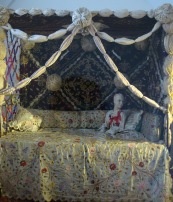
Around town
The Selimiye aside, the two most conspicuous mosques in the town centre are the Eski Cami (“old” in this case meaning 1414) and the elegant Üçşerefeli Cami (Three-Balconied Mosque), which has four minarets, each of them different in design and each of them graced with three balconies.
Immediately in front of the Üç Şerefli Cami stand the battered remains of the Sokullu Mehmed Paşa Hamamı, where visitors can bathe in Sinan-designed surroundings for a fraction of the price they’d pay at his better-known baths in İstanbul.
Even more impressive is the İkinci Beyazıd Külliyesi, a longish but very enjoyable walk northwest through the meadows. Built between 1484 and 1488, it stands in splendid isolation and houses an interesting small museum of health where mannequins illustrate how, even in Ottoman times, some medical practitioners appreciated the part played in healing by pleasing sounds and aromatherapy. There’s a local art gallery here too.
The Muradiye Cami, northwest of the Selimiye, dates back to 1435 and has an impressive collection of İznik tiles adorning its walls.
Completely overshadowed by the Selimiye, the Defterdar Mustafa Paşa Cami was also built by Sinan in 1574.
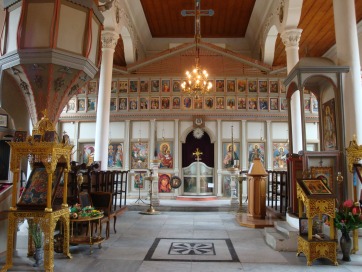 Bulgarian Church of St GeorgeBack in the town centre, it’s worth inspecting the round Macedonian Tower, a Romano-Byzantine building surmounted by the base of a (lost) 19th-century clocktower and the mid-16th-century caravanserai built for Sultan Süleyman the Magnificent’s Grand Vizier Rüstem Paşa and now converted into a hotel.
Bulgarian Church of St GeorgeBack in the town centre, it’s worth inspecting the round Macedonian Tower, a Romano-Byzantine building surmounted by the base of a (lost) 19th-century clocktower and the mid-16th-century caravanserai built for Sultan Süleyman the Magnificent’s Grand Vizier Rüstem Paşa and now converted into a hotel.
Nearby the incredibly basic Hotel Aksaray is not much of a place to stay in but is a rare surviving example of the rather frilly wooden architecture which once filled Edirne’s backstreets; there’s also a remarkable fresco in one of the bedrooms. More fine Edirne houses survive in the Kaleiçi Mahallesi.
Some way further south you may also stumble on the Great Synagogue, designed in Moorish Revival style in 1909 by the French architect , France Depre, on the site of two other synagogues lost to a fire in 1905. The largest synagogue in Turkey, it was abandoned in 1983 and fell into ruin, only to be completely restored in 2015.
Proximity to the border means that there are several reminders of Bulgaria in Edirne, including two churches. The more colourful of the two is the Church of St George which is stuffed full of icons and even manages a small museum of Bulgarian ethnography in its gallery. It’s no beauty externally but comes as a pleasant surprise nonetheless. The second is the more austere but recently restored Church of Sts Constantine and Helena in the Kirişhane Mahallesi that dates back to 1869.
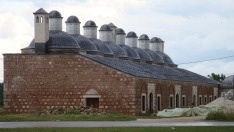 Sarayiçi and around
Sarayiçi and around
Even if you’re visiting at the wrong time of year to see the oil-wrestling, Sarayiçi is still worth the walk because it was here that the early Ottoman sultans built their Eski Sarayı (palace) in the days before the conquest of İstanbul (then Constantinople) when Edirne (then Adrianople) was their capital. There’s not much left to look at today since the palace was blown up just before the Russo-Turkish War of 1878-79 to prevent the Russians capturing the weapons stored inside it but the kitchens have recently been rebuilt.
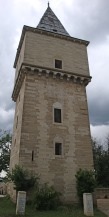 Near the stand set up to seat spectators for the oil wrestling, you will see the Adalet Kasrı, a mid-16th-century tower with two stones in front of it; on one were placed the petitions of the people to their sultan, on the other the heads of those who had offended him.
Near the stand set up to seat spectators for the oil wrestling, you will see the Adalet Kasrı, a mid-16th-century tower with two stones in front of it; on one were placed the petitions of the people to their sultan, on the other the heads of those who had offended him.
The riverside
In the cool of evening you should head straight south towards the point where the Tunca and Meriç rivers virtually meet. Here, there are two superb Ottoman bridges, the one across the Meriç featuring a frescoed pavilion from which walkers would have been able to admire the view.
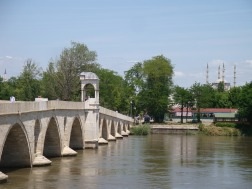
Here, too, you will find several waterside restaurants that are popular with wedding parties in the summer, not to mention the Protokol Evi, a tiny former police station that dishes up light lunches and teas.
Oil wrestling
Edirne is famous as the site of Turkey’s most high-profile oil wrestling (yağlı güreş) competitions. These macho displays – all tight leather trousers and glistening torsos – take place every July on the marshy island immediately to the north of town, the district called Sarayiçi or Kırkpınar.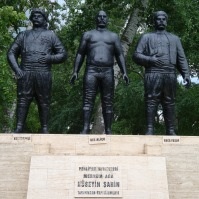
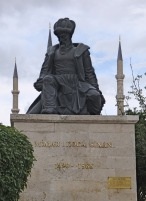 Shopping
Shopping
For souvenirs you can shop in the 15th-century Bedesten Pazarı (Bazaar) or in the covered Ali Paşa Pazarı, another work of Sinan which today does a roaring trade in fruit-shaped bars of soap and twig brooms decorated with small mirrors.
Eating
The İstanbulEats website once described Edirne as “ground zero for Turkish liver lovers“, and there are stacks of small, cheap places to try out its famed tava ciğer (fried liver), especially around the Hotel Rüstempaşa Kervansaray.
The most atmospheric places to eat are the fish restaurants like the Villa (Tel: 0284-225 4077) and Lalezar (Tel: 0284-213 0600) along the riverside although over summer weekends they tend to fill up with wedding and circumcision parties.
Otherwise there is a pleasing courtyard restaurant behind the Karam Hotel and plenty of little kebaberies in the town centre.
Sleeping
Selimiye Taşodalar Tel: 0284-212 3529
Karam Hotel Tel: 0284-225 1555
Hotel Aksaray Tel: 0284-212 6035
Otel Açıkgöz Tel: 0284-213 1944
Transport info
There are regular buses to Edirne from Esenler Otogar in İstanbul (3hrs) and fewer from Çanakkale.
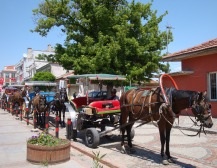 One of the best ways to get about town is in one of the phaetons that are parked near the Ulus Market.
One of the best ways to get about town is in one of the phaetons that are parked near the Ulus Market.
Border Crossings
Dolmuşes run from behind the Hotel Rüstempaşa Kervansaray to the Bulgarian border at Kapıkule (18km).
Take a taxi from in front of the tourist office on Talat Paşa Caddesi to get to the Greek border at Pazarkule (5km).
Day trip destinations

